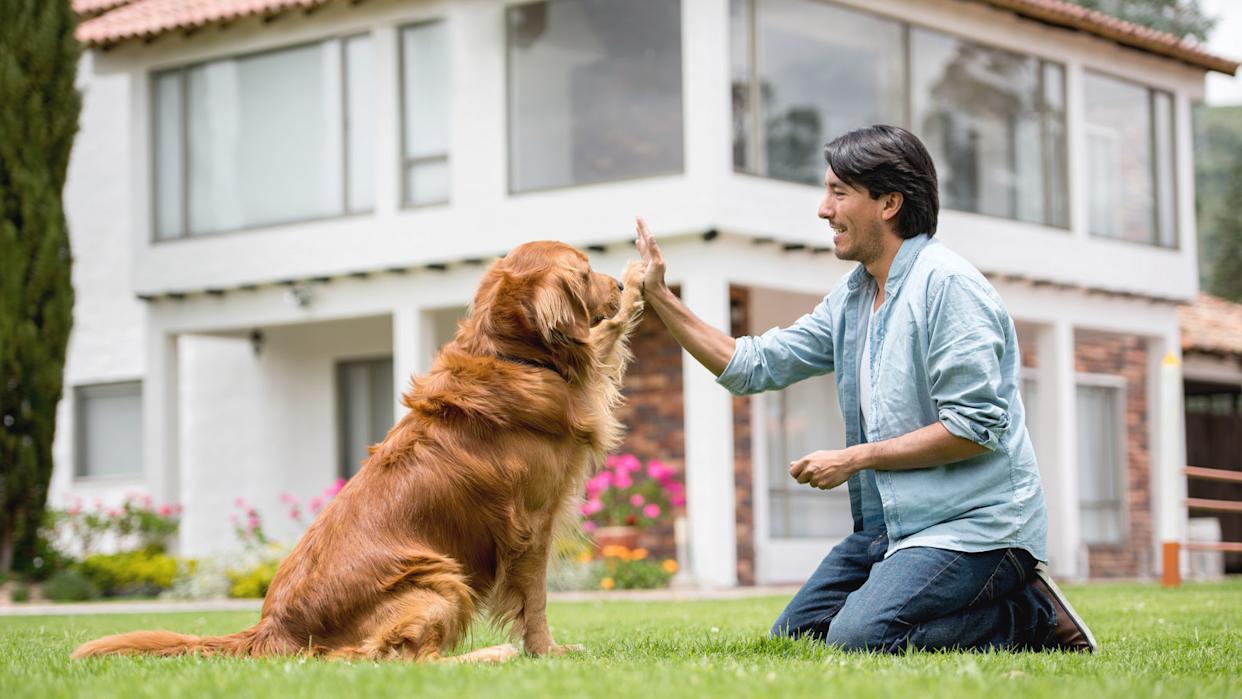Bridging the Communication Gap: The Role of Dog Trainers in Enhancing Pet-Owner Bond
Pets make our lives richer and fuller not just by providing companionship but by forming a profound bond that endears...

Pets make our lives richer and fuller not just by providing companionship but by forming a profound bond that endears them to our hearts. Such a relationship extends beyond the physical interactions to an emotional level where communication, though not verbal, plays a pivotal role. Understanding the silent messages and responding appropriately forms the basis of this special bond.
However, like all relationships, there’s bound to be hitches. Pet owners regularly grapple with communication issues. Your dog may bark incessantly, jump on every visitor, or nibble at your furniture, actions that are bothersome and deteriorates the quality of your relationship. These problems arise mainly due to an inability to understand and respond to our animal’s needs or signals effectively, thereby creating a communication gap.
The Importance of Communication in a Pet-Owner Relationship
While communication might not be the first thing to come to mind when thinking about your relationship with your pet, it is, in fact, enormously crucial. It extends beyond simple commands– it’s about understanding your pet’s needs, reading their signals, and reacting appropriately. For a relationship to thrive, effective communication is paramount.
However, building this effective communication dynamic isn’t always straightforward. Pets, much like humans, have unique personalities and temperaments, making it challenging to decipher their signals or modify their behaviour. Moreover, the language barrier compounds these challenges. In most cases, owners find themselves at a loss, unable to comprehend the needs or mood swings of their pets.
Role of Dog Trainers in Communication
Bridging the communication gap between pet and owner isn’t impossible – it just requires some special attention, patience, and professional help, often from dog trainers. These experts hold the knowledge and experience needed to unearth and navigate the complexities of pet communication. After all, they are well-versed in various breeds and their characteristic behaviours.
For instance, Kelly, a professional dog trainer, was hired by distraught owners of an overly aggressive German Shepherd called Max. Through her systematic training program, she decoded Max’s aggressive behaviour to be a result of fear and insecurity. Treating the root causes led to a drastic change in Max’s behaviour, reiterating the impact of professional aid in dealing with pet-related issues.
Comprehensive Guide to Training Techniques
Dog training is not a one-size-fits-all approach. It varies based on the pet’s personality and the outcomes desired. Among various strategies, positive reinforcement, cognitive training, alpha dog training, and clicker training are commonly practised.
Positive reinforcement fosters good behaviour by rewarding dogs for obeying commands. Cognitive training, on the other hand, enhances a dog’s mental acuity and problem-solving skills. Techniques like alpha dog training emphasize establishing dominance, while clicker training uses sound to signal ‘correct behaviour’. The key is to find the approach best suited to your pet while being consistent with training, ensuring optimal results.
Bridging the Bond: How Training Enhances the Pet-Owner Relationship
Training is not just about teaching dogs to behave – it is about understanding each other, strengthening the human-animal bond. The training process affords owners a deeper appreciation of their pet’s behaviours and signals. Simultaneously, pets learn to understand and react to owner’s cues, creating a healthier, happier bond.
Post-training, maintaining this bond is crucial. Regular practice of learnt commands, providing a stable environment, and allowing for recreational activities helps keep this bond alive. It’s essential to remember that this is a continuous process requiring time and commitment.
Choosing the Right Dog Trainer: Making Informed Decisions
Not all dog trainers are equal. Finding one whose training philosophy aligns with your expectations is critical. Research and references can help find the perfect fit. Beware of trainers employing harsh techniques or those who promise quick fixes. Choosing wisely ensures your dog’s wellbeing and facilitates the formation of a deep bond between owner and pet.
Dog Training Success Stories: From Misunderstood Behaviour to Deep Connection
Dog training stories are often inspiring, a testament to the transformation that can be achieved through good training. José and Bella, his Siberian Husky, come to mind. Her constant howling and indifference had initially baffled José. However, with a dedicated trainer’s help, understanding Bella’s unique breed-specific behaviour, José learnt specific tactics to connect with Bella, enhancing their relationship immensely.
Conclusion: Building a Future of Mutual Understanding and Connection
While challenges are a part of any pet-owner relationship, they are also doorways to an empathetic, loving bond – a bond built on understanding, effective communication, and respect. With the help of a dedicated trainer and patience, a future of mutual comprehension and harmony isn’t a far-fetched dream.



